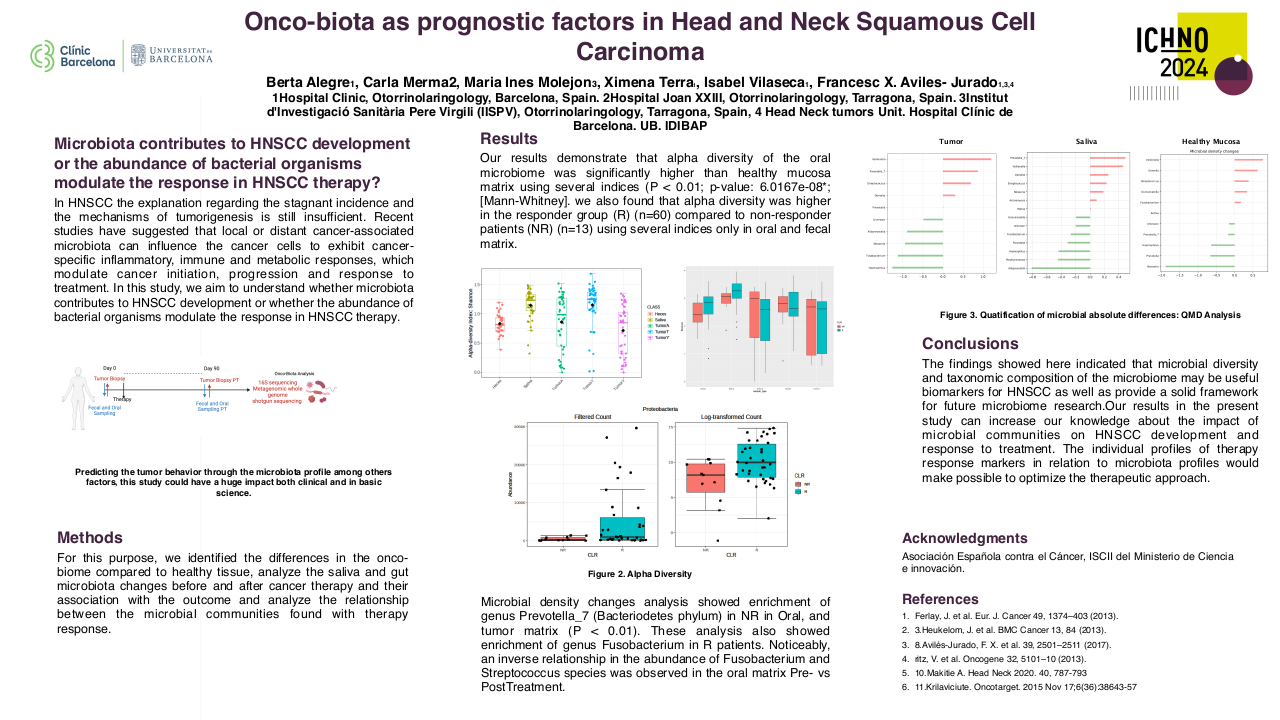Onco-biota as prognostic factors in Head and Neck Squamous Cell Carcinoma
Purpose/Objective
Head and Neck Squamous Cell Carcinoma (HNSCC) is diagnosed in more than half a million patients worldwide each year, and nearly one hundred thousand in the European Union, being the third tumor in developed countries and the sixth malignant tumor with the highest incidence worldwide. Sixty percent of patients with HNSCC present an advanced stage of the disease when diagnosed. In HNSCC the explanation regarding the stagnant incidence and the mechanisms of tumorigenesis is still insufficient. Apart from tobacco, alcohol and infection by human papilloma, it is likely that other undefined factors are playing important roles in HNSCC tumor development and progression. Recent studies have suggested that local or distant cancer-associated microbiota can influence the cancer cells to exhibit cancer-specific inflammatory, immune and metabolic responses, which modulate cancer initiation, progression and response to treatment. In this study, we aim to understand whether microbiota contributes to HNSCC development or whether the abundance of bacterial organisms modulate the response in HNSCC therapy.
Material/Methods
For this purpose, we identified the differences in the onco-biome compared to healthy tissue, analyze the saliva and gut microbiota changes before and after cancer therapy and their association with the outcome and analyze the relationship between the microbial communities found with therapy response.
Results
Our results demonstrate that alpha diversity of the oral microbiome was significantly higher than healthy mucosa matrix using several indices (P < 0.01; p-value: 6.0167e-08*; [Mann-Whitney]. we also found that alpha diversity was higher in the responder group (R) (n=60) compared to non-responder patients (NR) (n=13) using several indices only in oral and fecal matrix. Microbial density changes analysis showed enrichment of genus Prevotella_7 (Bacteriodetes phylum) in NR in Oral, and tumor matrix (P < 0.01). These analysis also showed enrichment of genus Fusobacterium in R patients. Noticeably, an inverse relationship in the abundance of Fusobacterium and Streptococcus species was observed in the oral matrix Pre- vs PostTreatment.
Conclusion
The findings showed here indicated that microbial diversity and taxonomic composition of the microbiome may be useful biomarkers for HNSCC as well as provide a solid framework for future microbiome research.Our results in the present study can increase our knowledge about the impact of microbial communities on HNSCC development and response to treatment. The individual profiles of therapy response markers in relation to microbiota profiles would make possible to optimize the therapeutic approach.






